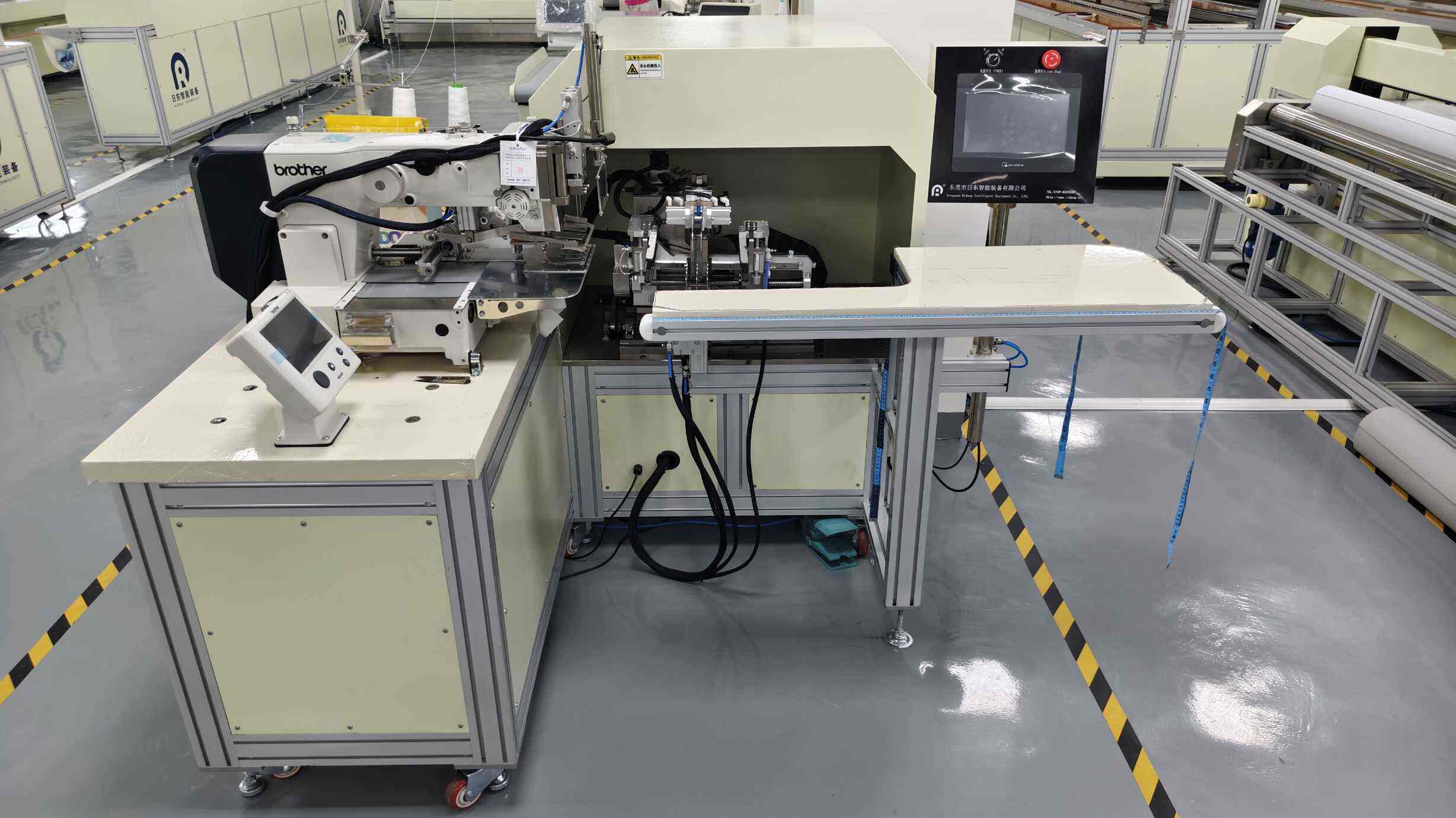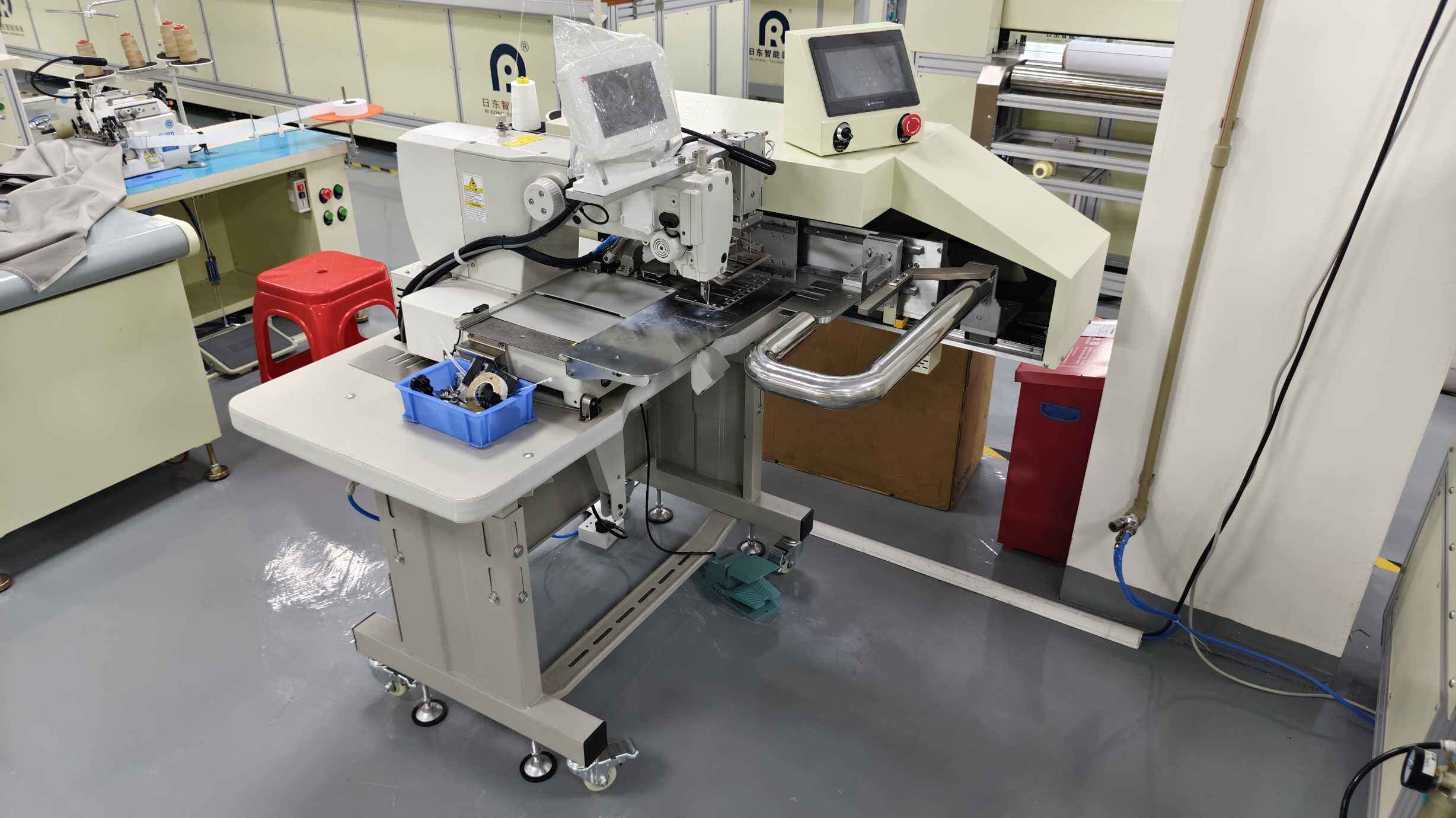The Art & Science of Perfect Drapery Pleats: Your Ultimate Guide to Modern Pleating Machinery
In the world of window fashion, few details carry the weight and elegance of perfectly formed pleats. Whether it's the crisp uniformity of a pinch pleat, the flowing grace of a goblet pleat, or the structured simplicity of a pencil pleat, these folds transform fabric into sophisticated design statements. Yet, achieving consistent, high-quality pleats at scale demands more than skilled hands—it requires the precision engineering and automation of advanced curtain pleating machines and integrated curtain pleating sewing machines.
For manufacturers facing the pressures of rising labor costs, stringent quality demands, and tight deadlines, mastering this technology isn't just an advantage; it's a necessity. This comprehensive guide dives deep into the machinery powering modern pleated curtain production, exploring how automation from leaders like RiDong Intelligent Equipment is revolutionizing the industry.

Why Pleating Precision Matters: Beyond Aesthetics
Pleats are far more than decorative elements:
1. Structural Integrity: Pleats distribute the weight of heavy drapery fabric evenly across the curtain track or rod, preventing sagging and ensuring smooth operation.
2. Light & Privacy Control: The depth and density of pleats directly impact how effectively curtains block light and provide privacy.
3. Durability & Longevity: Professionally formed pleats resist flattening or losing shape over time, maintaining the curtain's intended appearance through countless openings and closings.
4. Brand Reputation: Inconsistent, sloppy, or uneven pleating is immediately noticeable to discerning customers and interior designers, damaging brand perception.
Achieving this level of consistency manually is incredibly time-consuming and prone to human error. This is where specialized machinery becomes indispensable.
Inside the Curtain Pleating Machine: Core Components & Technology
Modern curtain pleating machines are marvels of mechatronic engineering, integrating mechanical precision with electronic control:
1. Fabric Feeding System:
Precision Servo Motors: Drive rollers ensure smooth, consistent fabric feed without stretching or slippage. Variable speed control adapts to different fabric weights (sheers to heavy blackouts).
Tension Control: Sophisticated sensors and feedback loops maintain optimal tension throughout the feeding process, critical for uniform pleat formation. Imagine handling delicate silk dupioni versus heavy velvet – the machine adjusts automatically.
Guiding Mechanisms: Laser guides or precision edge sensors keep fabric perfectly aligned, preventing skewing that ruins pleat uniformity. This is crucial for patterns and stripes.
2. Pleat Forming Mechanism (The Heart of the Machine):
Customizable Formers: Interchangeable forming heads or templates define the pleat type (pinch, goblet, Three pleats, two pleats,pencil, cartridge, Euro pleat). Switching between styles takes minutes.
Precision Folding Arms/Blades: Engineered components mechanically fold the fabric against the former with exact pressure and alignment. Hardened steel ensures longevity.
3. Control System (The Brain):
PLC (Programmable Logic Controller): The central computer storing pleat programs (depth, spacing, number). Operators recall settings for different products instantly.
HMI (Human-Machine Interface): Touchscreen panel for intuitive programming, real-time monitoring, and adjustment. Shows pleats per meter, speed, temperature, fault codes.
Sensors: Monitor fabric presence, position, tension, temperature, and potential jams, triggering automatic stops for safety and quality.
4. Output & Stacking:
Gentle conveyor systems or stacking arms transfer pleated fabric without disturbing the set pleats. Vacuum tables may hold fabric flat during transfer.
The Seamless Transition: Integrating the Curtain Pleating Sewing Machine
For true end-to-end automation, especially for header tape application, the curtain pleating sewing machine is the natural next step. These specialized machines build upon the pleating foundation:
1. Integrated Pleat Formation: Similar high-precision pleating mechanisms as standalone machines ensure perfectly formed pleats before sewing.
2. Header Tape Feeding & Alignment: Automated systems feed curtain header tape (standard, pencil pleat, pinch pleat tape) and align it perfectly with the pleated fabric edge. Vision systems or precise guides guarantee alignment.
3. High-Speed Lockstitch Sewing: Industrial sewing heads, often with servo motors, stitch the tape to the pleated fabric at high speed (e.g., 2500-4000 stitches per minute). Key features include:
Needle Positioners: Ensure precise stitch placement relative to the pleat folds.
Automatic Thread Trimmers: Cut threads cleanly at the end of each seam.
Stitch Regulators: Maintain consistent stitch length regardless of operator speed variation.
4. PLC Control Integration: Coordinates the pleating and sewing sequences flawlessly. Programs manage pleat dimensions, stitch patterns, start/stop points, and trim commands.
The RiDong Advantage: Precision Engineering for Demanding Production
At RiDong Intelligent Equipment (Dongguan RiDong Intelligent Equipment Co., Ltd.), we understand the critical role reliable, high-performance machinery plays in your curtain manufacturing success. Our expertise in curtain pleating machines, curtain pleating sewing machines, curtain making machine, roller blind cutting, roller blinds welding, and outdoor shading systems is built on decades of engineering excellence.
Why Choose RiDong Pleating & Sewing Solutions?
Unmatched Precision & Consistency: Rigorous engineering tolerances and high-quality components guarantee perfect pleats and seams, batch after batch. Our machines achieve pleat depth tolerances within ±0.5mm.
Robust Construction for Heavy-Duty Use: Designed for 24/7 industrial environments. Steel frames, hardened components, and premium bearings ensure longevity and minimize downtime. Built to handle the demands of high-volume contract furnishing.
Intuitive Operation & Flexibility: User-friendly HMIs make programming and changeovers quick. Easily switch between pleat styles, fabrics, and curtain sizes. Store hundreds of programs for instant recall.
Seamless Integration Capabilities: Our machines are designed to integrate smoothly into existing production lines, including automated fabric handling systems.
Advanced Automation Features: Options include barcode scanning for automatic job recall, production data reporting, remote diagnostics, and integration with MES/ERP systems. Monitor OEE (Overall Equipment Effectiveness) in real-time.
Comprehensive Support: From expert installation and training to readily available spare parts and responsive technical service, we partner with you for long-term success. Global service network.
Beyond Basic Pleating: Advanced Applications & RiDong Solutions
Complex Pleat Styles: Our machines expertly handle intricate styles like deep goblet pleats, multiple-pinch pleats, and tailored cartridge pleats requiring precise multi-point folding.
Sheer Fabrics & Delicate Materials: Specialized tension control, gentle feeding, and lower temperature settings ensure flawless pleating without damage to voiles, silks, or delicate linens.
Heavyweight & Blackout Fabrics: Robust drive systems and higher-capacity heating elements effectively pleat and set dense fabrics like triple-weave blackout or heavy velvets.
Pattern Matching: Precise alignment systems ensure patterns (stripes, damasks) are perfectly centered within each pleat, a hallmark of premium manufacturing. Requires sophisticated optical sensors.
Integrated Header Systems: Our combined pleating-sewing machines efficiently attach various header tapes (pencil pleat, pinch pleat, wave tape, three pleats, two pleats) directly to the pleated panel.
Choosing the Right Curtain Pleating Machine: A Buyer's Guide
Selecting the optimal machine requires careful consideration:
1. Primary Pleat Types: Pinch, Goblet, Pencil, Euro, Wave? Ensure the machine handles your core styles with available formers.
2. Production Volume & Speed: What is your daily/weekly output requirement? Machines range from semi-automatic to fully automatic lines.
3. Fabric Spectrum: Do you primarily work with light sheers, medium weights, heavy blackouts, or a wide mix? Tension control and heating capacity are crucial.
4. Level of Automation Needed: Standalone pleater? Pleater with integrated sewing? Full line integration with automated cutting and handling? Consider ROI.
5. Workshop Space: Machine footprints vary significantly. Measure available space, including access for loading fabric rolls.
6. Budget & ROI: Balance initial investment against labor savings, quality improvement, increased throughput, and reduced waste. RiDong offers solutions across different budget points with clear ROI calculations.
7. Technical Support & Service: Proximity and reliability of the supplier's service team are critical for minimizing downtime. Ask about SLA (Service Level Agreement) terms.
Comparison: Standalone Pleater vs. Combined Pleating-Sewing Machine
|
Feature |
Standalone Curtain Pleating Machine |
Combined Curtain Pleating Sewing Machine |
|
Core Function |
Forms & sets pleats only |
Forms pleats AND sews header tape |
|
Output |
Pleated fabric panels |
Panels with header tape attached & ready |
|
Downstream Steps |
Requires separate sewing operation |
Minimal handling needed post-process |
|
Labor Required |
Operator for pleating + Sewing Op |
Primarily just 1 operator |
|
Space Requirement |
Smaller footprint |
Larger footprint (integrated unit) |
|
Investment Cost |
Lower |
Higher |
|
Best Suited For |
Large runs of pleated fabric, custom pleating services, operations with existing sewing |
High-volume production of finished pleated curtains, efficiency-focused ops |

The Future of Pleating: Automation & Smart Manufacturing
The trajectory is clear:
Increased Integration: Seamless lines combining automated fabric spreading, cutting, pleating, sewing, and finishing. RiDong is developing solutions for integrated curtain production cells.
IoT & Data Analytics: Machines reporting real-time performance data (OEE, downtime causes, maintenance needs) for predictive maintenance and optimized scheduling. Monitor energy consumption per meter.
Enhanced AI & Vision Systems: Automated defect detection (pleat consistency, stitch quality), advanced pattern matching, and adaptive process control based on fabric properties. AI optimizing pleat settings for new fabrics.
Sustainability Focus: Energy-efficient motors and heaters, reduced material waste through precision, and designs for longevity and recyclability. RiDong prioritizes IE4 class motors.
Partner with RiDong Intelligent Equipment for Your Pleating Success
Don't let inefficient manual processes or unreliable equipment limit your curtain production potential. Embrace the precision, speed, and quality consistency offered by advanced curtain pleating machines and integrated curtain pleating sewing machines.
RiDong Intelligent Equipment is your trusted partner in industrial drapery manufacturing solutions. We offer:
Expert Consultation: Our engineers work with you to understand your specific needs and recommend the optimal machinery solution.
Customizable Options: Tailor machines to your unique pleat styles, fabric types, and production volumes.
Demonstration & Trials: See our machines in action and test them with your own materials (Contact us to arrange).
Comprehensive Training: Ensure your team operates the equipment safely and achieves maximum productivity.
Global Support & Spare Parts: Minimize downtime with our responsive service network.
Unlock the potential of perfect pleats. Contact RiDong Intelligent Equipment today for a consultation and discover how our cutting-edge curtain pleating and sewing machinery can transform your production efficiency, elevate your product quality, and boost your bottom line.